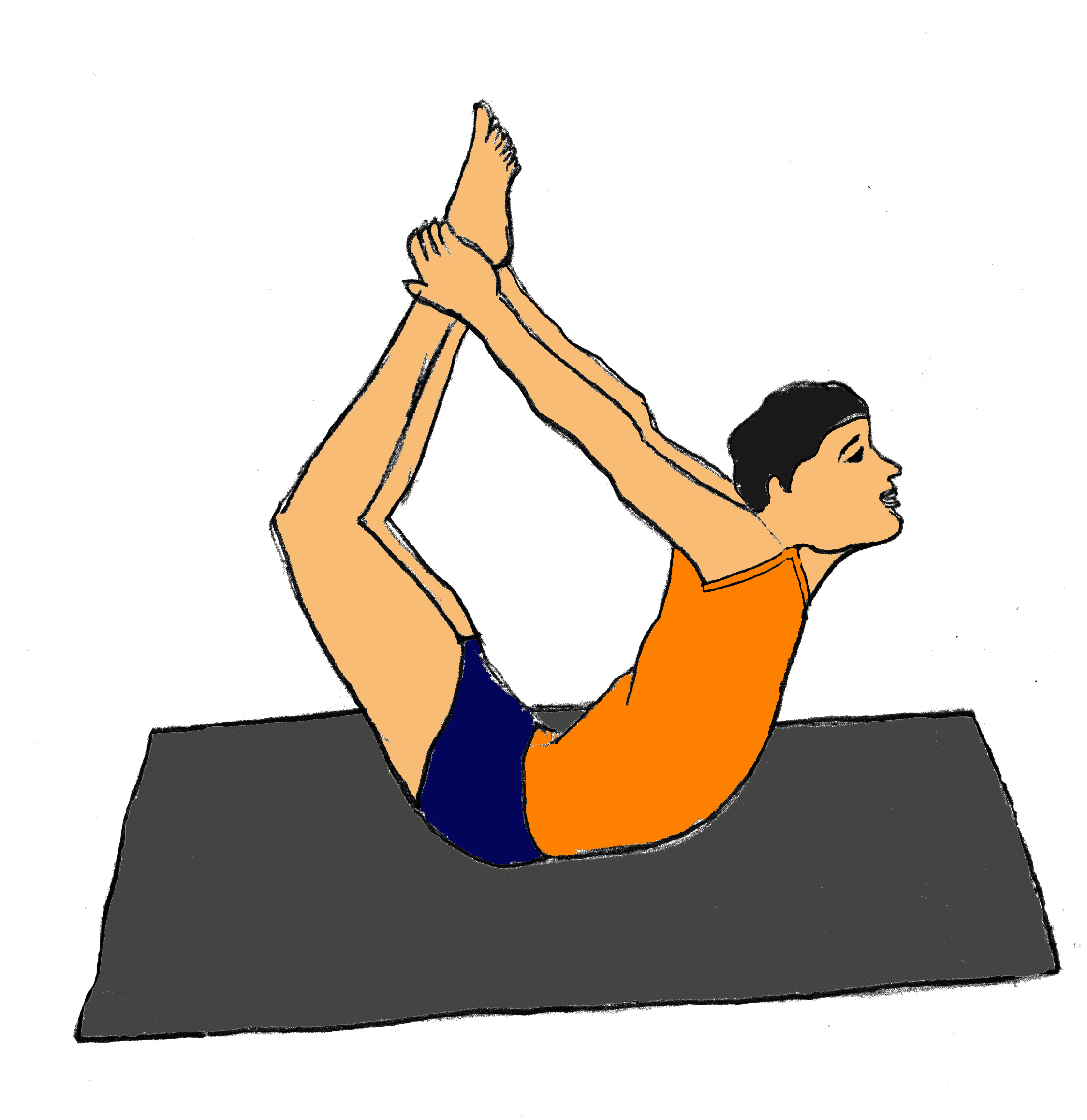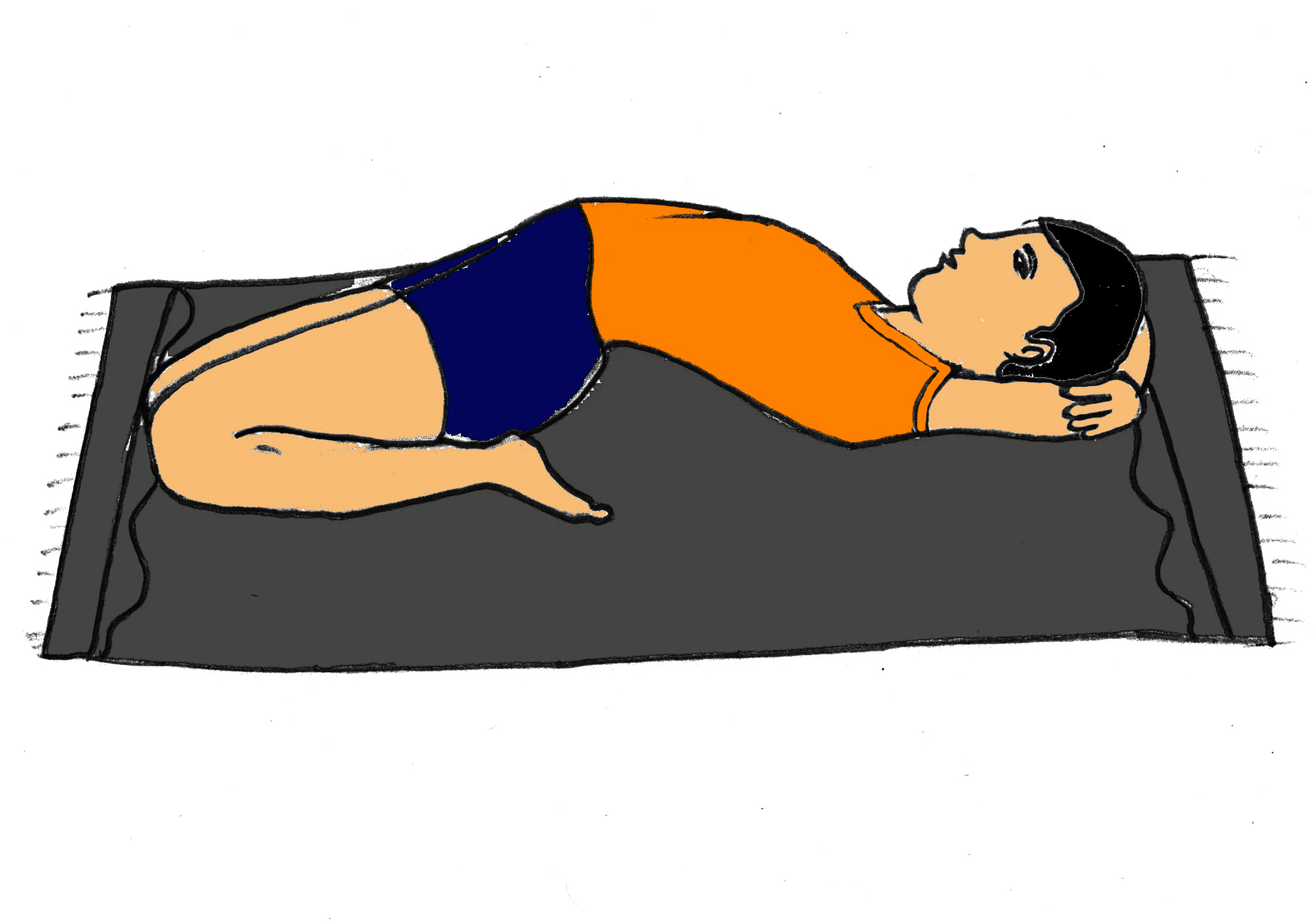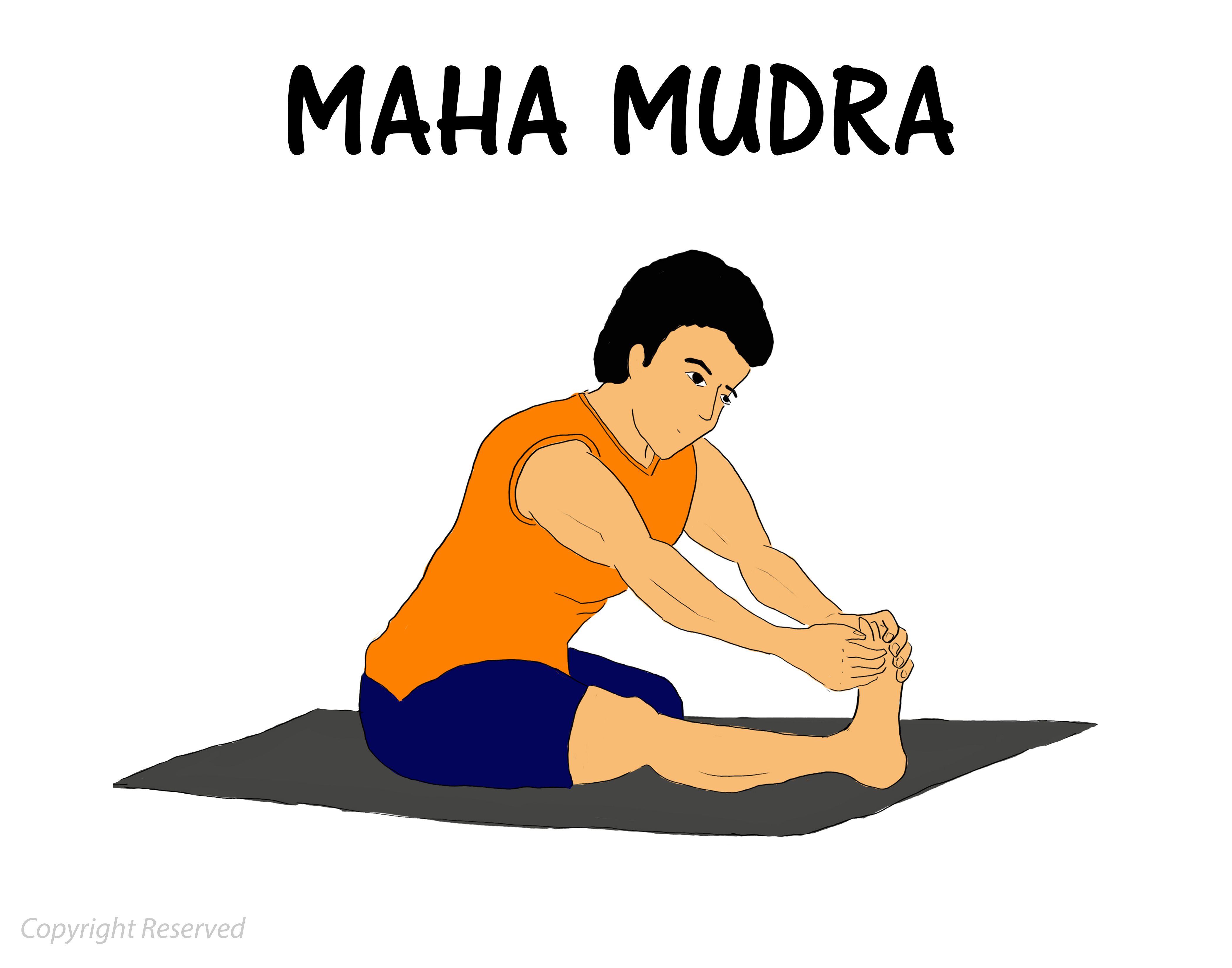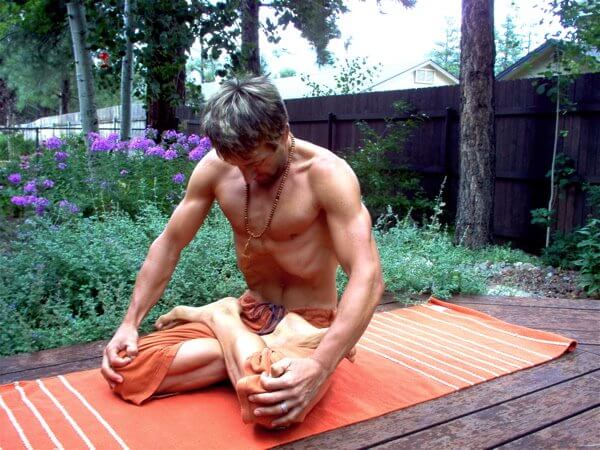Ardha Baddha Padmasana
Ardha Baddha Padmasana (Half Bound Lotus Pose) is a seated posture that combines the benefits of lotus (Padmasana) and a forward bend. It is often practiced in traditional Ashtanga yoga sequences and is an intermediate pose that challenges flexibility, balance, and concentration. Here’s a detailed breakdown of the pose:
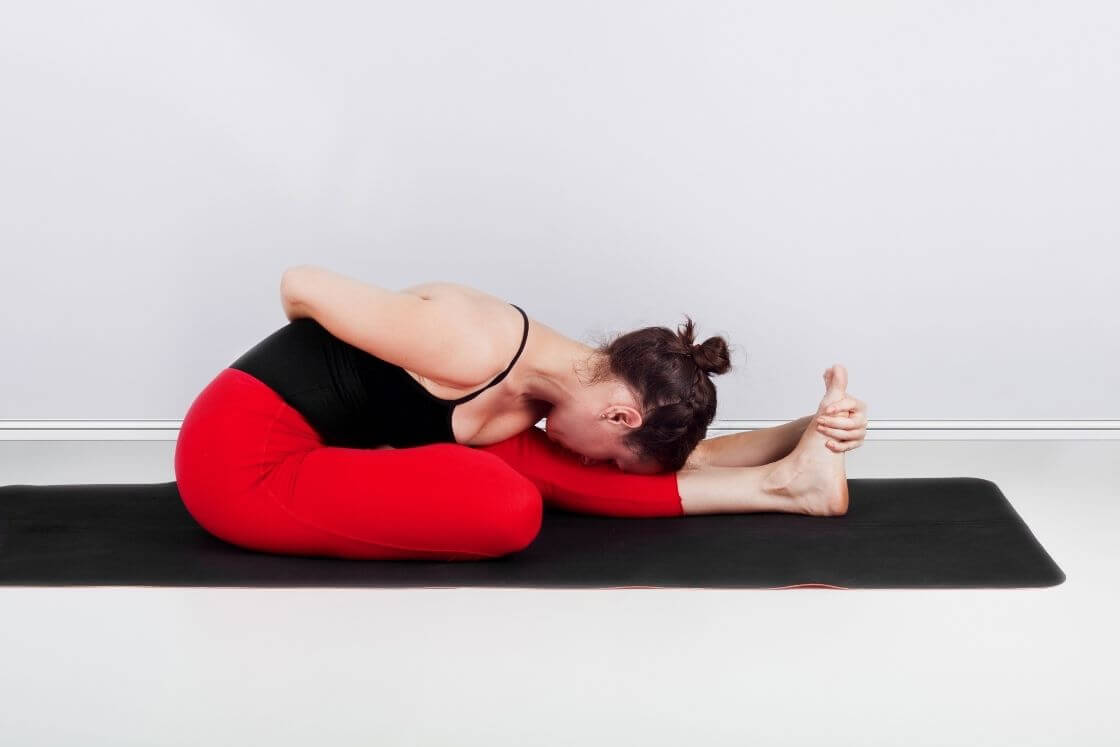
Meaning of the Name:
- Ardha – Half
- Baddha – Bound
- Padma – Lotus
- Asana – Pose
Thus, Ardha Baddha Padmasana translates to “Half Bound Lotus Pose.”
Step-by-Step Detailed Instructions:
- Start in Dandasana (Staff Pose):
- Sit on the floor with your legs extended in front of you.
- Engage your thigh muscles, flex your feet, and sit up tall, elongating your spine.
- Place your hands beside your hips to stabilize your posture and keep your chest lifted.
- Bring the Right Leg into Half Lotus:
- Bend your right knee and bring your right foot up toward your left hip.
- Place the sole of your right foot on top of your left thigh, as close to your groin as possible. The sole should face upward, and the toes should point toward the sky.
- Ensure that the right knee is close to the floor and that you feel no strain in the knee joint. If the knee is elevated significantly, you may need to modify or work on hip-opening poses before attempting this posture.
- Engage the Left Leg:
- Keep your left leg extended straight on the floor, with the foot flexed and the toes pointing toward the ceiling.
- Press the back of the left thigh and calf into the ground, ensuring the leg is active and strong.
- Bind the Right Hand:
- Reach your right arm behind your back and attempt to grasp the big toe of your right foot (the foot in half-lotus). This creates the “bound” aspect of the pose.
- If you are unable to reach your toe, you can use a yoga strap around the foot, or simply rest your hand on your lower back.
- Left Hand Placement:
- With your left hand, hold the outer edge of your left foot (the extended leg). If this is difficult, you can hold onto your shin or ankle instead.
- Keep your arm straight, and ensure that your shoulder is relaxed.
- Fold Forward:
- Inhale deeply to lengthen your spine.
- As you exhale, begin to fold forward from your hips, leading with your chest. Avoid rounding your spine. Keep the movement smooth and controlled, bending as far as is comfortable without straining.
- If possible, rest your forehead on your left leg (shin or knee) while maintaining the bind.
- Hold the Pose:
- Breathe deeply and hold the posture for 5-10 breaths, or as long as it feels comfortable.
- With each inhale, lengthen your spine, and with each exhale, try to relax and deepen the fold slightly.
- Keep both legs active and the bound hand secure. Focus on grounding your sitting bones and maintaining balance.
- Release and Repeat:
- Inhale to lift your torso back up to a seated position, maintaining the length in your spine.
- Release the bind and carefully extend your right leg to return to Dandasana.
- Repeat the posture on the opposite side, bringing your left foot into half-lotus and binding with your left hand.
Alignment Tips:
- Foot Placement: The foot in the half-lotus position should rest comfortably on the opposite thigh. Make sure the toes are pointing upward, and the sole of the foot is facing out.
- Knee Safety: Avoid forcing the knee into position. If you feel discomfort in the knee, modify the posture or practice preparatory poses to open the hips before attempting this full variation.
- Grounding the Sitting Bones: Ensure both sitting bones are grounded equally on the floor. This will help you maintain balance and stability in the pose.
- Lengthen the Spine: As you fold forward, focus on elongating the spine. Avoid collapsing the chest or rounding the upper back.
- Breath Awareness: Use your breath to guide the movement. Inhale to lengthen and create space, and exhale to fold deeper.
Modifications and Variations:
- Use a Strap: If you cannot reach your foot behind your back, use a yoga strap around your bound foot. Hold the strap with your hand, gradually working toward the full bind as flexibility improves.
- Partial Bind: If binding your hand behind your back feels difficult, simply rest the hand on your lower back or side without attempting to catch the foot.
- Support for Knee: If the knee in half-lotus is lifted or feels uncomfortable, place a folded blanket or yoga block under it for support and to reduce strain.
Preparatory Poses:
- Baddha Konasana (Bound Angle Pose): This pose helps open the hips and groin, making it easier to get into the half-lotus position.
- Janu Sirsasana (Head-to-Knee Forward Bend): Stretches the hamstrings and prepares the body for forward folds.
- Supta Padangusthasana (Reclining Hand-to-Big-Toe Pose): Increases flexibility in the hamstrings and prepares for leg extensions.
Follow-Up Poses:
- Paschimottanasana (Seated Forward Bend): A deeper forward fold that continues to stretch the hamstrings and spine.
- Padmasana (Full Lotus Pose): For those who are more flexible, practicing full lotus after Ardha Baddha Padmasana can help deepen hip opening.
- Marichyasana: A series of seated twisting poses that involve similar binds and work on hip flexibility.
Benefits of Ardha Baddha Padmasana:
Physical Benefits:
- Hip Opener: This pose helps open the hips and increases flexibility in the hip joints and muscles.
- Stretches the Hamstrings: The forward fold in this pose deeply stretches the hamstrings of the extended leg.
- Strengthens the Back: Engaging the spine during the forward fold helps strengthen the muscles of the back, improving posture.
- Knee and Ankle Flexibility: The half-lotus position encourages flexibility in the knees and ankles.
- Stimulates Digestion: The forward fold applies gentle pressure on the abdominal organs, stimulating digestion and metabolism.
Energetic and Mental Benefits:
- Calms the Mind: Forward bends, such as Ardha Baddha Padmasana, are known for their calming effects on the mind and nervous system, reducing stress and anxiety.
- Focus and Concentration: The pose requires focus to maintain balance and alignment, helping to improve concentration.
- Grounding: The seated and forward-fold aspects of the pose help ground the body, promoting feelings of stability and inner calm.
Precautions and Contraindications:
- Knee Injuries: Avoid this pose if you have any knee injuries or discomfort, as the half-lotus position places pressure on the knee joint.
- Hip Tightness: If you have tight hips, practice preparatory poses to increase hip flexibility before attempting Ardha Baddha Padmasana.
- Lower Back Pain: Be cautious if you have lower back issues. Ensure you keep the spine long and avoid rounding the back excessively.
- Pregnancy: Pregnant women should avoid deep forward bends, especially in later trimesters, as they can compress the abdomen.
Video:
References:
https://www.tummee.com/yoga-poses/ardha-baddha-padmottanasana
Conclusion:
Ardha Baddha Padmasana is a rewarding pose that offers a deep stretch for the hips, hamstrings, and back while also promoting mental calm and focus. With consistent practice and attention to alignment, it can serve as an excellent preparatory posture for more advanced asanas like full lotus and deeper forward bends. Practice with mindfulness, honoring your body’s limits, and enjoy the many benefits this pose has to offer.
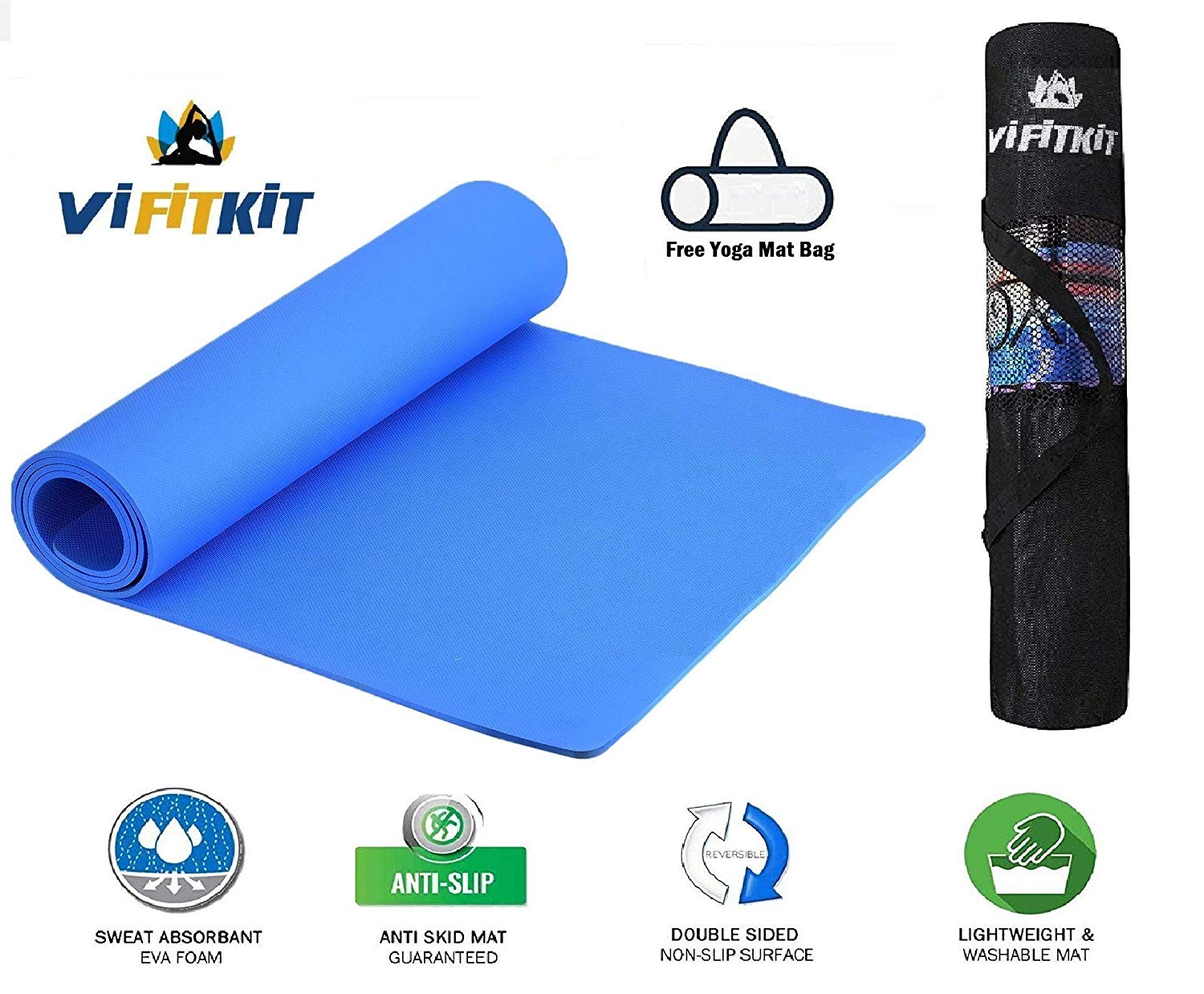
VI FITKIT Yoga Mat Anti Skid EVA Yoga mat with Bag for Gym Workout and Flooring Exercise Long Size Yoga Mat for Men and Women (Color - Blue)
Price: Rs 399.00 FREE Delivery. Details
About The Product
- With high density foam material, The thick ( 3 mm thick ) premium mat with comfort cushion spine, hips, knees and elbows on hard floors. This makes it a perfect size for both men & women.
- SWEAT RESISTANT AND WASHABLE YOGA MAT - Next time don’t stress when you sweat while doing yoga. The yoga mat is completely sweat resistant and has a Moisture resistant Technology which makes the mat easily washable with soap and water.
- This Yoga Mat is designed to give you the most comfortable yoga experience possible. The extra thick mat protects joints without compromising support or stability
- DURABLE & ECO FRIENDLY YOGA MAT - The EVA material is extremely durable and eco friendly. It lasts upto 5 times more than a regular plasticky mat! The material is biodegradable and free from PVC, silicon, latex and other toxic materials. We believe in creating quality and Eco friendly products for our customers!
- Care Tips: Do not place in washing machine or dryer, Please clean before and after using, clean regularly and keep it dry for healthy using.
